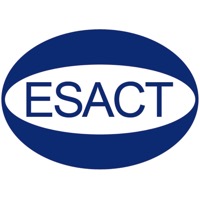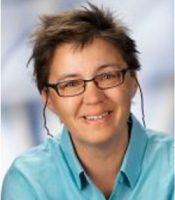Our mission: Professional dialogue
The European Society for Animal Cell Technology is a Society which brings together scientists, engineers and other specialists working with animal cells in order to promote communication of experiences between European and International investigators and progress the development of cell systems and productions derived from them.
Goals
ESACT was founded in 1976 to create a forum for the exchange of ideas on biological and engineering techniques to promote knowledge and the use of human and animal cells e.g. for the manufacturing of products.
Our members are scientists and engineers in academic, medical and industrial R&D and production at applied science institutions and universities, in the medical services, in industry, and in the political and regulatory bodies.
ESACT actively encourages interactions between academia, governmental and policy making agencies and the manufacturing and service industries.
Scientific Interests
ESACT focuses on the entire animal cell production process from the initial genetic studies of the cells through the stages of process development and validation, production, intensification, purification, regulatory issues for product release, to the efficacy, safety, testing and application of the final product.
Range of ESACT’s interests:
- Derivation, characterization, acceptance and validation of cell lines
- Optimization/enhancement of the biochemical and physiological cell behaviour
- Process design, optimization, scale-up and technology transfer (up/downstream)
- Biosynthesis and processing of cell products
- Cells and vectors for genetic medicine/therapy
- Tissue engineering and biomedical devices
- Cells as tools for product discovery and testing
- Replacement of animals in testing and research
The ESACT Organization
The Society is headed by the Executive Committee (XC) consisting of 8 members. Regular members without function and members with function (Chairperson, Vice-Chairperson, Treasurer and Secretary) represent the Society. A member with function can hold this function for two terms of 2 years. Members without a function stay in the XC for one term of 2 years.
Then the positions of regular members are to be voted on by all ESACT members at the upcoming elections during the biennial ESACT Meetings. The final vote will be announced during the General Assembly at this meeting. This means that every two years the members of the XC change. Additionally, the Society has one person for administrative help at ESACT office.
The early career scientists and researchers of the society are represented by the ESACT Frontiers group.
Executive Committee Board Members
Members with a function
Stefanos Grammatikos, Vice Chair
UCB, Belgium
Anne Tolstrup, Secretary
AbtBioConsult, Hillerød, Denmark
Francesc Gòdia, Treasurer
UAB, Spain
Regular Members

Emma Petiot
CPE-Lyon Engineer School, France

Antonio Roldao
IBET, Portugal

Paulo Fernandes
Orchard Therapeutics, UK
Niall Barron
NIBRT, Dublin, Ireland
ESACT 2024 Meeting Chair

Alan Dickson
University of Manchester, UK
ESACT Office
Ms. Marie Groll & Ms. Marierose von Ledebur
Remember Management GmbH
Phone: +49 30 47 37 25 77






